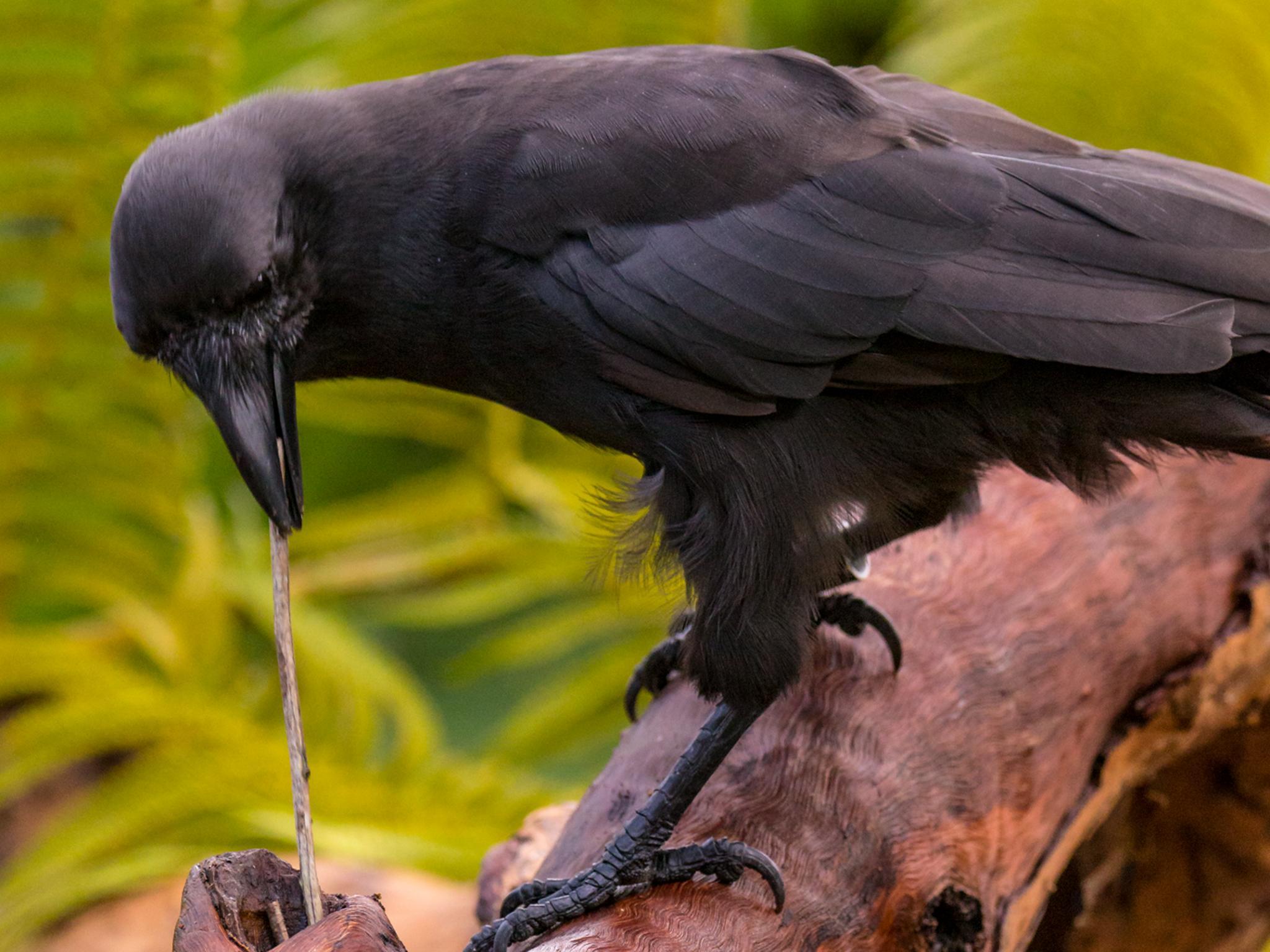Sacred crows on brink of extinction discovered to be skilled tool-users
Conservationists plan to reintroduce 'alala birds, which according to traditional Hawaiian beliefs act as a spirit guide for the souls of the dead, back into the wild after the last ones outside zoos died out in 2002

Your support helps us to tell the story
From reproductive rights to climate change to Big Tech, The Independent is on the ground when the story is developing. Whether it's investigating the financials of Elon Musk's pro-Trump PAC or producing our latest documentary, 'The A Word', which shines a light on the American women fighting for reproductive rights, we know how important it is to parse out the facts from the messaging.
At such a critical moment in US history, we need reporters on the ground. Your donation allows us to keep sending journalists to speak to both sides of the story.
The Independent is trusted by Americans across the entire political spectrum. And unlike many other quality news outlets, we choose not to lock Americans out of our reporting and analysis with paywalls. We believe quality journalism should be available to everyone, paid for by those who can afford it.
Your support makes all the difference.A sacred crow driven to extinction on its native Hawaii has been found to be able to make and use highly effective tools in a discovery which could help conservationists reintroduce the bird into the wild later this year.
According to traditional Hawaiian beliefs, the ’alala bird is a spirit guide that takes souls to a “Leaping Place” on their journey to the afterlife. Without the help of such a guide, souls may be forced to “drift forever through a twilight of ghosts”.
The last ’alala disappeared from the wild in 2002, amid a widespread decline of native Hawaiian flora and fauna linked to the arrival of invasive species brought by humans. Its chicks were “very vulnerable” to rats and the adults were killed by cats, dogs and mongooses, according to the US Fish & Wildlife Service.
That left a total population of about 100 individuals in captivity. But conservationists plan to release a number of the birds back into native forest later this year in the hope that the species can re-establish itself.
Ahead of the reintroduction programme, scientists have discovered the Hawaiian crow, as it is also known, has a genetic predisposition to use tools – usually long sticks designed to winkle out insects from holes in dead wood. Only a handful of bird species around the world – including the New Caledonian crow – have been found to display similar abilities.
Writing in the journal Nature, the researchers said: “The ’alala is a highly dextrous tool user. During experimental trials, birds routinely selected tools of appropriate dimensions, replaced unsuitable tools, and transported non-supplied sticks to the log. Tool modification occurred frequently and we even observed tools being manufactured from plant materials.”
To test whether genetics played a role in this behaviour, the scientists raised seven ’alala so that they were not able to observe adult tool-users.
“All [seven] birds eventually used sticks and other objects in an attempt to reach hidden food during probe trials, and four were successful; a fifth subject later used tools successfully on the log task,” Nature reported.
Some sticks appeared to be prized possessions – tempting some to resort to theft. “In groups of young ’alala, we often observed birds interfering with each other’s attempts to use tools, for example by stealing sticks,” the researchers wrote.
Dr Christian Rutz, of St Andrews University, who took part in the study, along with experts from San Diego Zoo and Bath University, told The Independent: “One of the exciting aspects of this discovery is we believe that these birds would have used tools naturally in the wild. It’s the dexterity that’s striking. Those birds that did use tools were highly proficient … They are very good at handling sticks.”
The discovery could help make the reintroduction project a success, he added. “I think the chances are very good. The project is one of the most high-profile species recovery projects I’m aware of in the world,” Dr Rutz said.
“There are massive challenges that lie ahead over the coming years, but with sufficient support from the local authorities, other stakeholder groups and the general public, I think this will be a success.
“Our discovery of these birds using tools may play an important role in this effort. This is a completely unexpected insight. Until now we didn’t know that these birds had this tool-using habit. We can think about what these birds may need if they try to express this tool-using behaviour.
“We’re discussing all sorts of options about how we can get these birds off to a good start.”
This includes providing supplementary feeding stations that will automatically weigh the ’alala if they visit, so the conservationists can take action if a bird gets into trouble.
Writer and journalist Mark Jerome Walters spelled out the species’ importance to local people in his book Seeking the Sacred Raven: Politics and Extinction on a Hawaiian Island.
“To native Hawaiians, the ’alala … is a sacred bird, a guardian spirit and a guide to the afterlife,” he wrote. “When a Hawaiian dies, the soul travels to a Leaping Place – each island district has one, usually a high ocean promontory – and awaits its guide.
“For people of the districts of South Kona and Ka’u on Hawai’I Island, one of those spirits is the ’alala, and one of the Leaping Places is the volcanic cliff at the southernmost point of the island, Ka Lae. Without a spirit guide such as the ’alala, a soul could lose its way and drift forever through a twilight of ghosts and night moths, with only grasshoppers to eat.”
Join our commenting forum
Join thought-provoking conversations, follow other Independent readers and see their replies
Comments